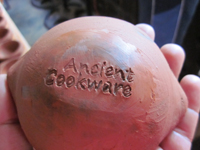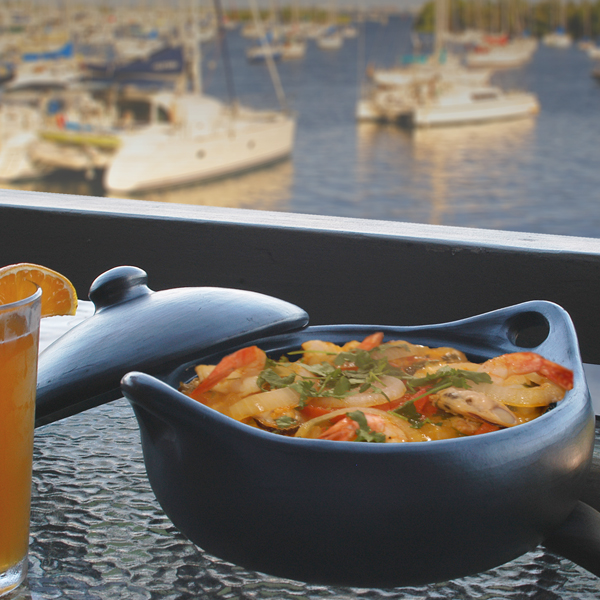 Black Clay, La Chamba Flat Casserole
Black Clay, La Chamba Flat Casserole
Black Clay, La Chamba Flat Casserole
Rating: 4.83/5
Related Products
Products




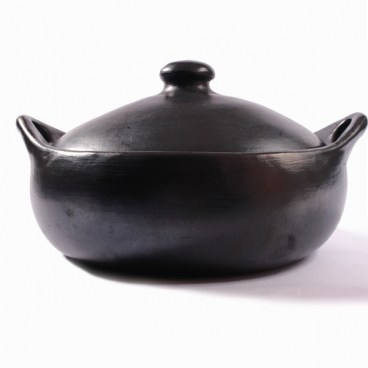
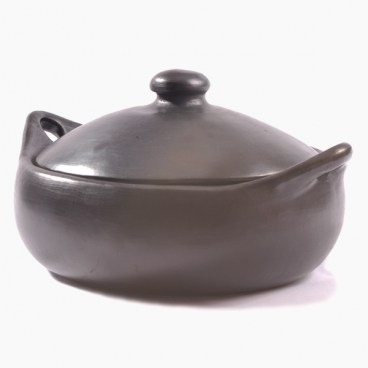
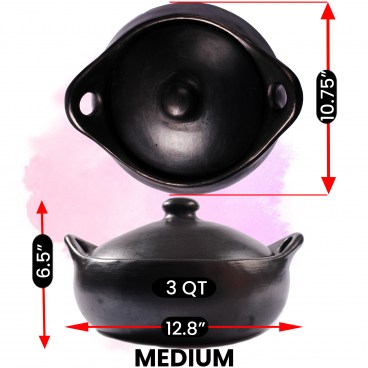
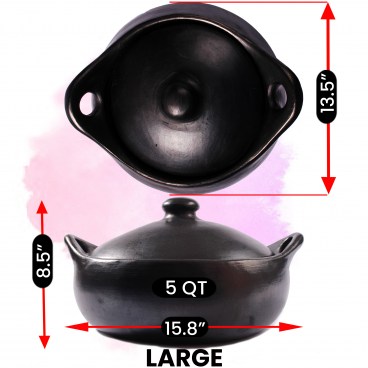


Description
About the piece
Care and Use
Curing
How they are Made
Recipes
Related Products
Reviews
Sunday, 20 November 2016
LOVE IT. Cute.Cylinda S Mallory
Monday, 14 November 2016
Thank youTiffany
Sunday, 10 July 2016
I have been using these chamba pots for decades. they are wonderful. they move from stove to oven perfectly, they are beautiful and as long as you treat them well (I hand wash them but that is pretty easy - like cast iron) they last for years. highly recommended.Shari
Friday, 08 April 2016
Everything we had hoped for and much much more. We just cooked our first Tandori Chicken in it and I have to say it was every bit as amazing as the best Indian food restaurants we had enjoyed Tandori chicken at. I was concerned that the all natural, unglazed interior would mean that it would be hard to clean, but it actually was very easy to clean, no food or sauce got stuck to the interior, and yes, the flavor was much much better than cooking in conventional pans or glass cooking ware. From oven to the table, the whole experience of working with this beautiful La Chamba Black Clay Casserole was outstanding, earthy, delicious! (review image)John D Sebastian
Friday, 25 March 2016
I loved the idea of something simple and timeless, but this actually turned out to be a little high maintenance. First I "seasoned" it per instructions with boiling water, but the pot gave off a smoke smell that filled the house and set off my asthma. So then I thought maybe if I coated it with a banana (yes, really, as per leaflet you are encouraged to season it with a plantain or banana). Doing that reduced smoke, tho not entirely because the bottom outside can`t be coated. Then I cooked a pot of beans but the pot released a white foam residue from the banana. All this, plus the thought that if this ever should crack while in use, it would make a huge mess, makes me decide this isn`t for me. You may feel very different, who knows. Its a great size.Anonymous
Wednesday, 23 March 2016
Great pot! Cooks so well! The beans I made in it were creamy and delicious.Petscanner
Wednesday, 23 December 2015
OKLauri
Tuesday, 19 May 2015
VERY GOOD FOR MY USE AS I REMEMBER MY MOTHER AND GRAND MOTHER USEING THESE KIND OF POTS FOR YEARS. GOOD MEMORIES.Delores Marshall
Tuesday, 07 April 2015
These pots are lovely. When one first seasons a pot in the oven with hot water they do smell a bit like warm clay, but I`ve used one for years and am about to get a few more. I`ve put mine into a hot oven with no problem but I haven`t used it directly on a gas burner. They hold heat well on the table, which is one reason I use them for all kinds of hot dishes. They have a human feel and sound to them and like all hand-made pottery they show the marks of the people who made them. The lids seal well. They are friendly pots.Mary H. Siple
Tuesday, 03 March 2015
This is soooo nice to cook things in. And, the appearance of it in the middle of the dining table is very impressive. In fact, we had guests over for dinner and they ordered two La Chamba pots when they got home.Randal M.
Tuesday, 07 October 2014
A great cooking pot. I use it for many things, both on and in the stove. Keeps things nice and juicy. Cooks very evenly. One of my favorite cooking tools for guest dinners. As with my other La Chambra, the only problem is the size of the knob on the lid. It`s a bit to small to get a good grip on.Dennis A. Schmidt
Wednesday, 18 June 2014
spectacular casserole to prepare brazilian`s traditional dishes like PEIXADA and MOQUECAS. It ensure a great taste on all kind of food, from rice to Shrimp with chayote. Awesome!!Fernando Mafra


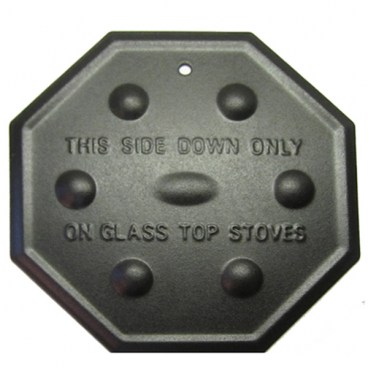

 Three different types of clays from local mines are used in the making of these ceramics. They are dissolved in water and strained to remove little stones and other impurities. The interior of the ceramics are made with a mixture of a smooth, grey clay that gives the piece its strength and body, and a sandy grey clay that makes it easier to mold. The exterior is then “glazed” with a watery red clay which gives the piece a smooth surface, and allows for the polishing.
Three different types of clays from local mines are used in the making of these ceramics. They are dissolved in water and strained to remove little stones and other impurities. The interior of the ceramics are made with a mixture of a smooth, grey clay that gives the piece its strength and body, and a sandy grey clay that makes it easier to mold. The exterior is then “glazed” with a watery red clay which gives the piece a smooth surface, and allows for the polishing.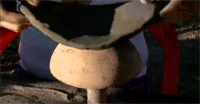 The process begins by flattening a ball of clay and forming it around a mold specifically made for each model. This “shell” is then smoothed and trimmed using tools fashioned from bamboo and plastic pieces.
The process begins by flattening a ball of clay and forming it around a mold specifically made for each model. This “shell” is then smoothed and trimmed using tools fashioned from bamboo and plastic pieces. 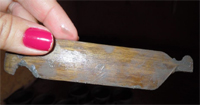 The pieces are then left to air dry, receiving a light polishing during the drying to make sure they have a smooth surface and free of sand. The pieces are then transported to other artisans that specialize in adding rims and/or handles. The handing off progression continues with other artisans which specialize in the production of the lids, which are custom
The pieces are then left to air dry, receiving a light polishing during the drying to make sure they have a smooth surface and free of sand. The pieces are then transported to other artisans that specialize in adding rims and/or handles. The handing off progression continues with other artisans which specialize in the production of the lids, which are custom 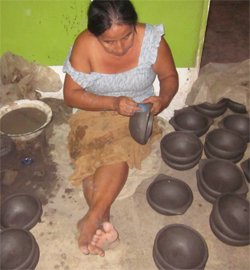 made for each piece. Even the knobs on the lids are made by artisans who specialize in only adding knobs to lids.
made for each piece. Even the knobs on the lids are made by artisans who specialize in only adding knobs to lids. After each step the pieces are laid out to dry in the scorching La Chamba sun. Sometimes the process is delayed due to rains which prevent the drying of the pieces. When it begins to rain, the entire community is mobilized to quickly cover drying pieces that were outside in various production stages. The pieces are then lightly polished with a soft sponge to ensure a smooth exterior, and they are then taken to artisans that glaze each piece with the watery red clay. The glaze is not let to dry completely to allow for the next step of polishing, which is probably the most laborious part of the process, the polishing.
After each step the pieces are laid out to dry in the scorching La Chamba sun. Sometimes the process is delayed due to rains which prevent the drying of the pieces. When it begins to rain, the entire community is mobilized to quickly cover drying pieces that were outside in various production stages. The pieces are then lightly polished with a soft sponge to ensure a smooth exterior, and they are then taken to artisans that glaze each piece with the watery red clay. The glaze is not let to dry completely to allow for the next step of polishing, which is probably the most laborious part of the process, the polishing.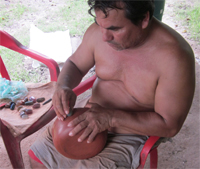 The hand polish, a process known as burnishing, is done by rubbing the entire piece with semiprecious stones until it has a uniform brightness on the surface. Depending on the size of a piece, the polishing can take up to half an hour to an hour. Originally, this polishing was done with smooth river rocks
The hand polish, a process known as burnishing, is done by rubbing the entire piece with semiprecious stones until it has a uniform brightness on the surface. Depending on the size of a piece, the polishing can take up to half an hour to an hour. Originally, this polishing was done with smooth river rocks 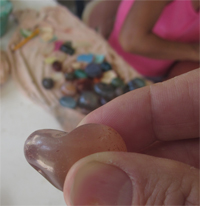 from the bottom of the Magdalena River, but is now done with agate stones brought from Brazil which are stronger. With use, the stones grind down even creating grooves from corners and edges.
from the bottom of the Magdalena River, but is now done with agate stones brought from Brazil which are stronger. With use, the stones grind down even creating grooves from corners and edges. To start the firing process, the pieces are placed inside metal drums, with smaller objects first going inside larger earthenware pieces. These metal drums are then placed in wood burning ovens, usually late in the day so as to minimize the heat to the workers. The firing process takes approximately three hours, with the furnace reaching approximately 750°C. This high heat, together with the glazing and burnishing process, result in utilitarian pieces strong enough to withstand rough treatments and make them ovenproof.
To start the firing process, the pieces are placed inside metal drums, with smaller objects first going inside larger earthenware pieces. These metal drums are then placed in wood burning ovens, usually late in the day so as to minimize the heat to the workers. The firing process takes approximately three hours, with the furnace reaching approximately 750°C. This high heat, together with the glazing and burnishing process, result in utilitarian pieces strong enough to withstand rough treatments and make them ovenproof.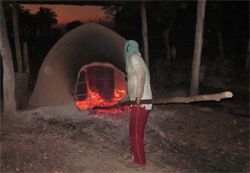 After the firing comes probably the most interesting part of the entire process and is what gives the pieces their unique black color. The metal drums are pulled out of the ovens with the help of long sticks.
After the firing comes probably the most interesting part of the entire process and is what gives the pieces their unique black color. The metal drums are pulled out of the ovens with the help of long sticks.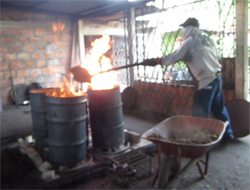 The drums are then covered to extinguish the flames but keep the material smoking vigorously for quite some time. The smoke penetrates the pieces giving each piece the black color that so characterizes products from La Chamba.
The drums are then covered to extinguish the flames but keep the material smoking vigorously for quite some time. The smoke penetrates the pieces giving each piece the black color that so characterizes products from La Chamba.